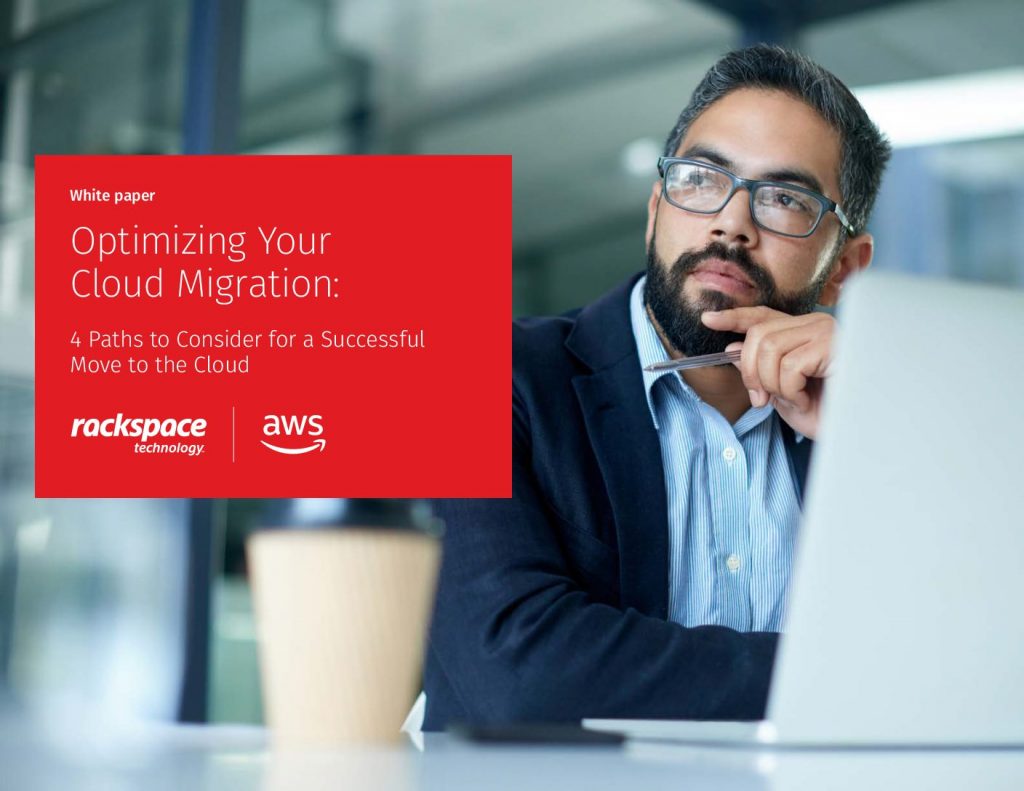A company can take many paths when moving to the public cloud.
Deciding how to migrate to AWS should be a process that focuses on each individual workload, rather than trying to find a single solution to be used across the board.
Key to these decisions are factors around:
Level of engineering
effort Time constraints Licensing restrictions
In-house vs. Commercial-Off-The-Shelf (COTS) software Resource requirements
With each of these limitations in mind, there are a few paths that should be assessed for viability as you decide to make your migration plans. Rackspace Technology always recommends assessing these paths in this order, as they are organized from most-to-least ideal. If a path is not possible, scrap it and move on to the next. It’s important to remember that these paths are not interchangeable. Rather you should carefully consider everything before eliminating a path from your process.

































































